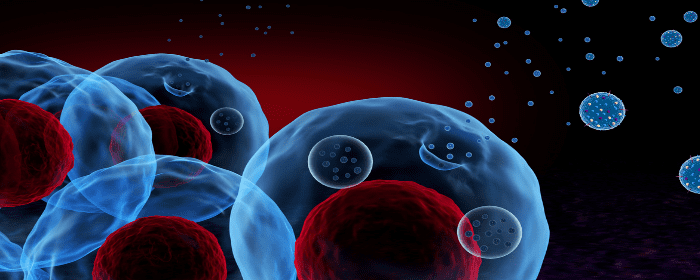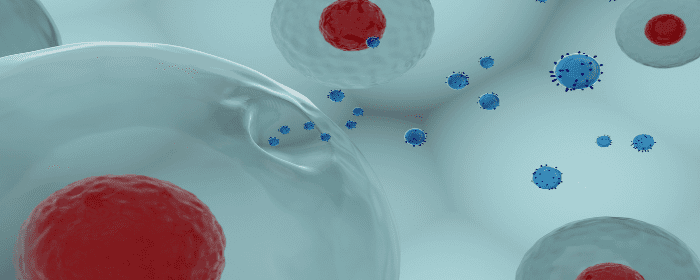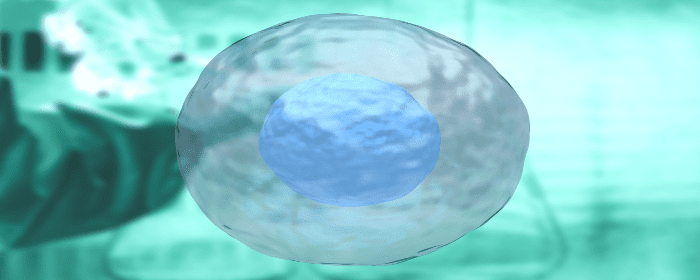
by admin | Feb 26, 2020 | Alzheimer’s Disease, Exosomes
Alzheimer’s disease is a progressive form of dementia, which means its symptoms get worse over time. Alzheimer’s disease primarily affects memory. People with Alzheimer’s disease first have trouble recalling recent memories, but they eventually lose memories of things that occurred earlier in life. Alzheimer’s disease can also cause irritability, social disengagement, and problems performing tasks of daily living. As the disease worsens, it becomes increasingly difficult to care for people with Alzheimer’s disease and most eventually require full-time care. This article is on an Alzheimer’s Disease study that may bring hope to those seeking an alternative to help manage symptoms or halt progression.
There is no cure for Alzheimer’s disease. Treatments include cholinesterase inhibitors (donepezil, rivastigmine, and galantamine) or memantine. These drugs may slightly improve cognition or temporarily slow the disease, but they do little to change the overall course of the disease or truly alleviate symptoms. Since Alzheimer’s disease affects over 5 million people in the United States alone, researchers are aggressively pursuing ways to treat the cause of dementia.
The precise cause of Alzheimer’s disease is unknown;
however, the brains of people with the disease have very high levels of a
protein called beta-amyloid. This protein can cause inflammation, which is
damaging to brain tissue and believed to contribute to Alzheimer’s disease
symptoms.
In the race for a cure, researchers tested the effects of exosomes from mesenchymal stem cells in mice with experimental Alzheimer’s disease study. Without treatment, these Alzheimer’s disease mice have difficulty with various tests of memory and cognition compared to healthy mice of the same age. Astonishingly, mice treated with exosomes retrieved from mesenchymal stem cells showed remarkable improvements in tests of spatial learning, memory, and cognition (e.g. modified Morris water-maze). The exosomes reduced the levels of beta-amyloid protein and beta-amyloid plaques in regions of the brain responsible for learning and memory. The researchers found that these exosomes, taken from the human umbilical cord, contained high amounts of enzymes that break down beta-amyloid proteins. Indeed, treatment with mesenchymal stem cell-derived exosomes reduced brain inflammation (i.e., the exosomes reduced inflammatory cells and inflammatory cytokines). These results apparently indicate treatment with stem cell-derived exosomes reduced brain inflammation, reduced brain beta-amyloid, and improved learning and memory in experimental mice.
More studies will need to be performed in humans to continue
research of this treatment and impact in human cases. Nevertheless, given the
lack of treatments for Alzheimer’s disease, these results are quite impressive.
Few treatments, if any, improve memory or reduce beta-amyloid levels and brain
inflammation. At best, patients currently hope to slow the progression of the
disease and ease symptoms.
Reference: Ding M.
et al. (2018). Exosomes Isolated from Human Umbilical Cord Mesenchymal Stem
Cells Alleviate Neuroinflammation and Reduce Amyloid-Beta Deposition by
Modulating Microglial Activation in Alzheimer’s Disease. Neurochemical
Research. 2018, Nov;43(11):2165-2177.

by admin | Feb 24, 2020 | Aesthetics, Exosomes
Atopic dermatitis, better known as eczema, is a chronic, itchy skin disease. People with eczema have chronically dry skin, often in patches, that can be intensely itchy. The patches of atopic dermatitis vary from red bumps (papules or vesicles) when they are inflamed, to dry, scaly, pink areas when they are not inflamed. Patients with eczema itch so frequently that the skin in the lesion can thicken and harden, a process called lichenification. Even patients who manage to clear the lesions usually have a recurrence (i.e. the itchy patches come back).
Patients with eczema can try lotion and moisturizers to
soften the skin and reduce itchiness, but these are only helpful temporality
and only seem to work for people with mild disease. Often, topical
corticosteroids are required. Steroids are applied to areas of atopic
dermatitis to reduce inflammation and itchiness. In severe cases where steroids
are not fully helpful, light therapy (phototherapy) may be needed. Patients may
require more intense therapy for atopic dermatitis such as cyclosporine, methotrexate,
azathioprine, mycophenolate mofetil, or dupilumab. These medications have their
own set of side effects, so they are reserved for people with severe, chronic
eczema. Certainly better, safer treatments for atopic dermatitis are needed.
To this end, researchers conducted the first of its kind study to answer whether exosomes retrieved from mesenchymal stem cells taken from human adipose tissue (i.e. fat tissue) could relieve symptoms of atopic dermatitis in laboratory mice. Mice with experimental atopic dermatitis have similar symptoms to humans with the disease; they have itchy, red lesions that cause the skin to thicken. In the research study, treatment with stem cell-derived exosomes significantly improved the clinical score in these mice. In other words, stem cell exosome treatment reduced redness, swelling, scaling, dryness, and itching. Exosome treatment also reduced objective signs of inflammation including inflammatory cytokines (TNF, IL4, etc.), inflammatory antibodies (IgE), and inflammatory cells (eosinophils).
These results indicate that treatment with stem cell-derived
exosomes substantially reduced symptoms in mice with atopic dermatitis. Of
course, this work needs to be replicated in humans, but this important work
lays the foundation for future clinical trials.
Reference: Cho, BS. et al. (2018). Exosomes derived from
human adipose tissue-derived mesenchymal stem cells alleviate atopic
dermatitis. Stem Cell Research & Therapy. 2018, Jul 11;9(1):187.

by admin | Jan 15, 2020 | Exosomes, Kidney Disease, Mesenchymal Stem Cells, Stem Cell Research
Kidney diseases are among the most expensive and most debilitating diseases. Total costs are in excess of $50 billion a year, with $30 billion spent on people with end-stage renal disease including hemodialysis and kidney transplantation. People with kidney diseases have diminished quality of life, and substantial amounts of their time are devoted to medical treatment. Not surprisingly, researchers are aggressively pursuing novel therapies to treat kidney diseases before they result in end-stage renal disease. Stem cells and exosomes are among the most exciting and the most promising research topics in this area.
Most cells release tiny packets called extracellular
vesicles. The most notable extracellular vesicles are exosomes. While small,
exosomes are filled with high concentrations of potentially helpful substances
such as RNA, DNA, and proteins. While most cells release exosomes, researchers
are particularly interested in exosomes released by stem cells. It is within
these exosomes that stem cells pass along the substances that make stem cells
helpful in tissue repair and regeneration.
Zhang and
coauthors reviewed the recent advances that have been made using exosomes
to treat kidney diseases. Most of the work has focused on acute kidney injury
or AKI. Acute kidney injury can lead to
chronic kidney disease and kidney failure. Thus, if one could stop AKI, they
could potentially reduce the risk of chronic kidney disease.
Many different research groups have shown the power of
exosomes and other extracellular vesicles in treating acute kidney injury.
Exosomes taken from mesenchymal stem cells protected kidney cells from cell
death and fibrosis and helped them repair themselves. The
same was true of exosomes derived human umbilical cord stem cells.
Even stem cells taken from human liver cells were
able to improve kidney function after injury. There are many other examples.
Gatti
et al. reported that extracellular vesicles derived from human adult
mesenchymal stem cells could protect against acute kidney injury, but, most
impressively, also halted the progression of AKI to chronic kidney disease.
This finding has important implications for people who suffer from serious
acute kidney illnesses, such as kidney ischemia. It means that—if confirmed in
human studies—stem cell-derived extracellular vesicles can help treat kidney
disease in the short term and reduce the risk of that illness becoming a
chronic, debilitating problem.
Further research is needed in this field but, initial
results confirmed by many laboratories have created well-founded enthusiasm for
the future.
Reference: Zhang, W. et al. (2016). Extracellular vesicles
in diagnosis and therapy of kidney diseases. American Journal of Physiology – Renal Physiology. 2016, Nov 1;
311(5): F844-F851.

by admin | Dec 18, 2019 | ALS, Exosomes, Mesenchymal Stem Cells, Stem Cell Research, Stem Cell Therapy
Amyotrophic lateral sclerosis or ALS is a devastating, progressive neurological disease. While the precise cause is unknown, ALS does destroy nerve cells in the spinal cord, which causes several debilitating symptoms. Often the first symptom of ALS is weakness in the hands or arms that is usually more pronounced on one side of the body. As more spinal cord nerve cells become dysfunctional and die, patients with ALS become weaker, their movements grow slower, and their muscles begin to atrophy (i.e. break down). At the same time, some muscles in the limbs become spastic, which means they are constantly in a contracted state. In later stages of ALS, patients have difficulty swallowing and breathing. Mesenchymal Stem Cell Treatment for ALS is a unique and new option.
The only drug to have any known survival benefit in ALS is riluzole. Patients who take riluzole live longer than those who do not; however, the drug does not improve function or meaningfully reduce symptoms. The only other approved ALS treatment, edaravone, may slow the rate at which ALS gets worse. However, neither of these drugs is a cure—far from it, in fact. Indeed, doctors and patients are left with virtually no effective treatment options for ALS.
Because ALS is caused by the destruction of nerve cells in the spinal cord, the regenerative properties of stem cells may offer a solution. The hypothesis is that stem cells—and exosomes collected from stem cells—can help protect, preserve, or even regenerate cells that are affected by ALS.
A flurry of research has been published over the last decade documenting the safety and possible effectiveness of mesenchymal stem cells for the treatment of ALS. In 2009, Deda et al. showed bone marrow stem cells injected into the spinal area were safe in patients with ALS, even showing that some patients had improvements in neuromuscular testing. The research groups of Karussis, Mazzini, Blanquer, and Baek showed similar safety results. Martinez et al. showed that stem cells derived from bone marrow could improve survival in patients with ALS. Rushkevich et al. showed that stem cell infusion improved the quality of life in patients with ALS.
While more work is clearly needed to determine the full effectiveness of stem cell treatment for ALS, the number of researchers working on this topic and the number of successful studies published in this area are reasons for hope. These clinical studies show that stem cell treatment for ALS is clearly safe and feasible. What is needed are larger clinical trials that specifically focus on the effectiveness of treatment, both in the near- and long-term.
Reference: Roberta Bonafede and Raffaella Mariotti. (2017). Stem cell mobilizers: ALS Pathogenesis and Therapeutic Approaches: The Role of Mesenchymal Stem Cells and Extracellular Vesicles. Frontiers in Cellular Neuroscience. 2017; 11:80.

by admin | Nov 13, 2019 | Stem Cell Research, Exosomes, Mesenchymal Stem Cells
The spinal column is made up of more than a dozen vertebral bones stacked on top of each other. Since the spine is not a single bone, it is capable of pivoting and bending, which gives the torso a degree of flexibility. A key part of this structure relies on the substance between the vertebral bones called the intravertebral disc.
The intravertebral disc is made up of the annulus fibrosis (the tough outer ring) and the nucleus pulposus (the jelly-like inner core). Each intervertebral disc acts as a shock absorber between the vertebral bones. Over time and with age, however, the intervertebral disc tends to breakdown. This can cause called degenerative disc disease, which includes herniated discs (“slipped discs”), pinched nerves, neck and back pain, and nerve problems. Obviously, finding ways to reverse or prevent intravertebral discs from breaking down is of great medical and scientific interest and for the countless patients with degenerative disc disease.
As with other groups interested in regenerative medicine, researchers have turned to stem cells in an effort to regenerate tissue within the intravertebral disc. One research group reported their recent success using bone marrow-derived mesenchymal stem cells. The scientists collected exosomes—very small packets filled with highly concentrated molecules such as proteins, microRNA, transcription factors and lipids—from these stem cells. In this study, researchers also collected exosomes from nucleus pulposus cells and tested the exosomes in various ways.
The researchers found that exosomes could send out signals to bone marrow mesenchymal cells and call them to the intervertebral disc. The exosomes also prompted the stem cells to become new nucleus pulposus-like cells. Conversely, exosomes from bone marrow mesenchymal cells caused nucleus pulposus cells to grow and multiply (i.e. proliferate). Finally, exosomes helped the tissue in degenerating vertebral discs to express the same genes as healthy discs.
While these results are complex, they suggest that exosomes from bone marrow mesenchymal cells and nucleus pulposus cells work together to recruit and make more healthy cells in degenerating vertebral discs. This could have profound implications for the millions of people with degenerative disc disease. If these results are confirmed in clinical trials, it would mean that exosomes could be used to prevent or reverse degenerative disc disease. We anxiously await further work in this exciting field.
Reference: Kang L. et al. (2017). Exosomes as potential alternatives to stem cell therapy for intervertebral disc degeneration: in-vitro study on exosomes in interaction of nucleus pulposus cells and bone marrow mesenchymal stem cells. Stem Cell Research Therapy. 2017; 8: 108.

by admin | Oct 11, 2019 | Mesenchymal Stem Cells, Exosomes, Osteoarthritis
The field of Regenerative Medicine has shown great promise for helping those with a variety of chronic diseases, including arthritis. Indeed, data on the potential value of using stem cells to address issues relating to arthritis have been growing. While specific stem cells like mesenchymal stem cells have demonstrated therapeutic effects in models of arthritis and other inflammatory diseases, the specific ways in which these cells confer their benefits are not yet well understood. Given that these stem cells contain different types of elements, it is important that research establishes which of these elements is critical to the therapeutic properties of stem cells.
A recent study, published in Theranostics, looked specifically at the different effects that small exosomes and larger microparticles from within mesenchymal stem cells have on the inflammatory processes that occur in arthritis. To conduct their experiment, scientists isolated the exosomes and microparticles from mesenchymal stem cells using an ultracentrifugation technique and then exposed the exosomes and the microparticles to cells of the immune system – specifically, T and B lymphocytes, which are implicated in arthritis.
What the researchers found was that, in their models of arthritis, both the exosomes and the microparticles suppressed the T lymphocyte proliferation that is indicative of inflammation. However, unlike microparticles and even parental mesenchymal stem cells, the exosomes were also able to induce other anti-inflammatory effects. The result of exosome activity was, therefore, more efficient blunting of inflammation.
These results point to the potential of not just stem cells, but specifically the exosomes of these cells, in therapeutically addressing inflammatory arthritis. While more research is needed to understand how these exosomes could actually impact arthritis patients, these data provide hope that stem cells and even just elements of stem cells will help these patients by improving their ability to combat problematic inflammation.
Reference: Cosenza, S. et al. (2018). Mesenchymal stem cells-derived exosomes are more immunosuppressive than microparticles in inflammatory arthritis. Theranostics, 8(5), 1399-1410.







 St. Petersburg, Florida
St. Petersburg, Florida
